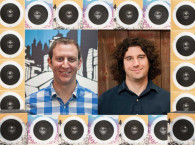“One more take.”
Remember that joke? The producer in the recording studio says to the band: “Not bad, fellas. Let’s do one more take, this time with more emphasis on tone, harmony, melody, rhythm, composition, lyrics, musicianship, tempo, and originality.”
Maybe it’s time for the audio industry to try “one more take.”
During last year’s 135th Audio Engineering Society (AES) Convention in New York, it was apparent that the audio engineering community unites several generations. Also, the younger but much more technically perceptive generation is fascinated by the achievements of those who had the “privilege” of working in the big studios and doing audio production for live concerts, or during great broadcast moments from the 1960s, the 1970s, and the 1980s.
The younger generations have learned to value the tools and what they can do with them. They even value the “good old analog” electronics, essentially by using plug-in emulations of the real things inside Pro Tools or Logic. Yet, this generation also encodes studio recordings to MP3s.
From one content format to another, the music industry continually re-released its content in physical media until the Super Audio CD (SACD) and the Blu-ray disc (on video) formats appeared. And that was it. Suddenly, the Internet, mobile devices, and digital files changed everything. With that change came the MP3, the iPod, iTunes, and mobile networks. This accelerated the demise of physical media, on which the entire music industry had become over-dependent.
Meanwhile, technology continues to evolve. Even though SACD is dead and gone, the key developments remain valid and high-resolution audio is still a logical proposition. But is it well understood by the “plug-in” generation? A very faint sign of hope emits from the enthusiasm detected at events such as the AES conventions and the NAMM shows.
With new 64-bit processors and OSes becoming the norm, large bandwith networks available everywhere, and memory and storage increasing faster than consumers’ actual needs, it seems the industry is ripe for another go at quality.
As our contributing author Gary Galo noted in his impressions of the 135th AES Convention, it seems consumers are rediscovering the virtues of high-resolution sound and finding compressed formats such as MP3 unacceptable. But at the same time, mobile platforms and wireless networks have created new consumer behaviors. People are increasingly listening to music via headphones, soundbars, and portable wireless loudspeakers. Therefore, we need a new approach to address that changing landscape, and it’s not going to be with $20,000 home stereo (or multichannel) systems.
If downloading high-resolution audio files is practical and inspires a new group of record companies to reinvest in high-quality content production, it is clear that 1-bit DSD recordings could also breathe new life into studios, the pro audio industry in general, and even many high-end audio brands.
And it is at forums such as the Winter NAMM Show in Anaheim, CA—where those same generations again meet with producers and musicians—that the conscience needs to be raised. Not at the Venetian Hotel demo rooms in Las Vegas, NV. The signs are still fragile, the economic environment remains unstable, and the market trends are uncertain, but it all seems to be aligning for a “new take” in the audio industry.
João Martins
Editor-in-Chief






